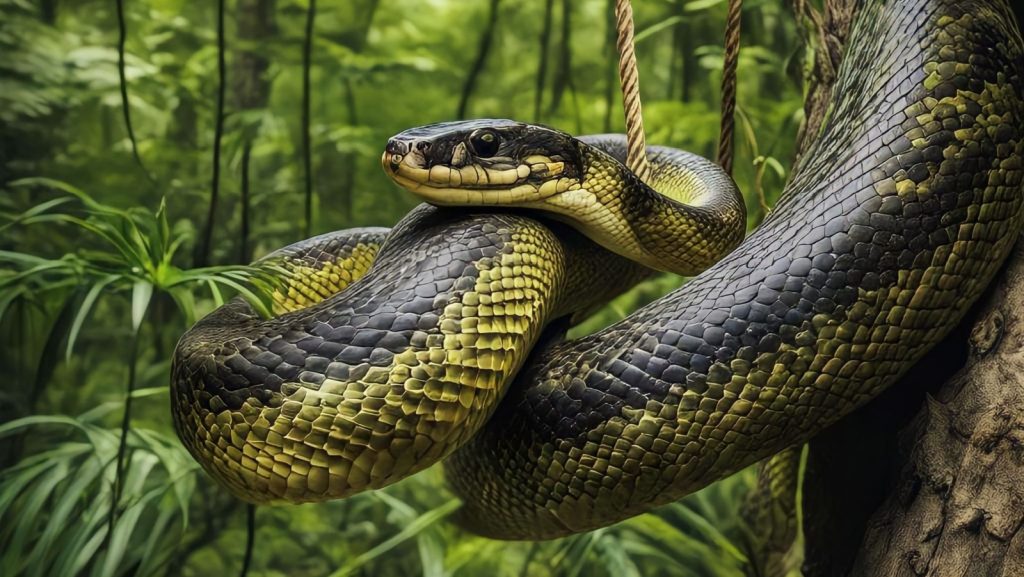Anacondas, known as one of nature’s most formidable predators, aren’t invincible. Despite their massive size and strength, these giant snakes face threats from unexpected corners of the animal kingdom. Let’s dive into the world of creatures that dare to take on these serpentine giants.
Jaguars: The Stealthy Hunters
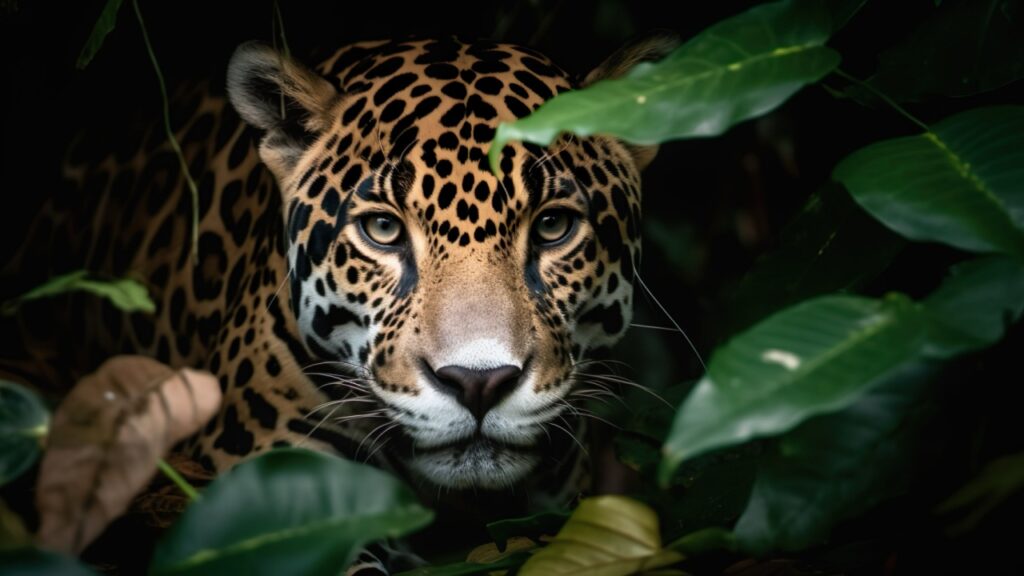
Jaguars are one of the few predators that can successfully hunt adult anacondas. These powerful big cats use their incredible strength and sharp claws to overpower the snakes. Jaguars are excellent swimmers, allowing them to pursue anacondas both on land and in water. Their strong jaws can easily crush the snake’s skull, making them a formidable foe for even the largest anacondas.
Caimans: The Scaly Adversaries
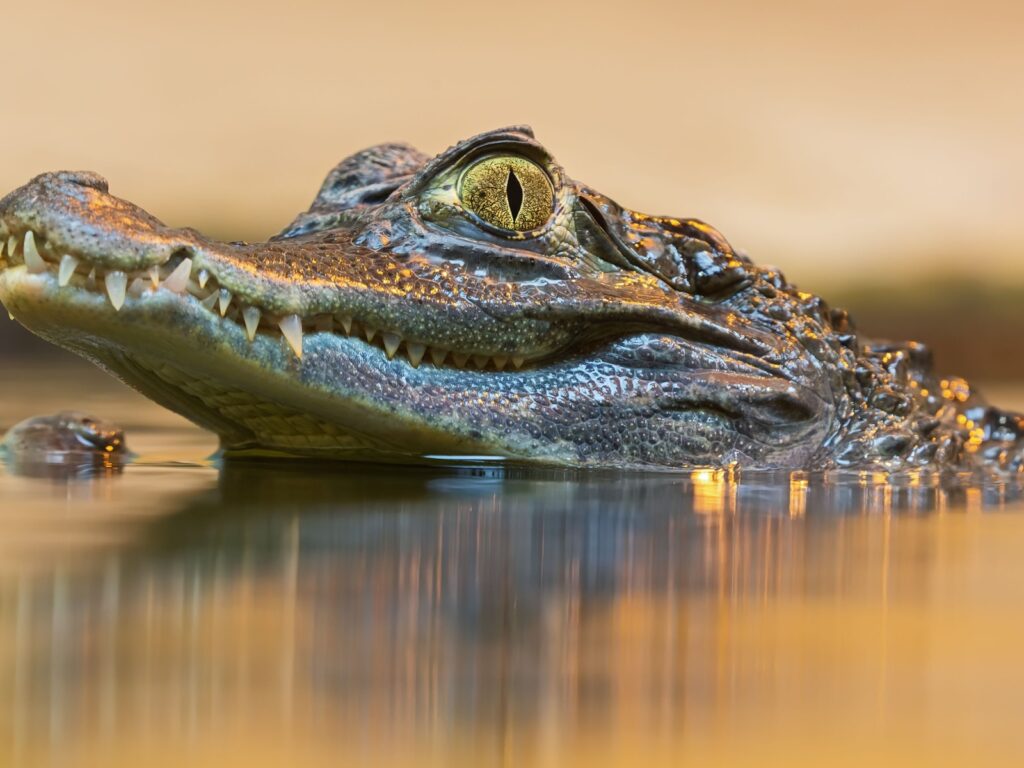
Caimans, close relatives of alligators, are another major threat to anacondas. These reptiles share the same habitat as anacondas and often compete for food. While caimans typically prey on smaller anacondas, larger individuals can take on adult snakes. The battle between a caiman and an anaconda is a true clash of titans, with both creatures capable of inflicting serious damage on each other.
Harpy Eagles: The Aerial Assailants
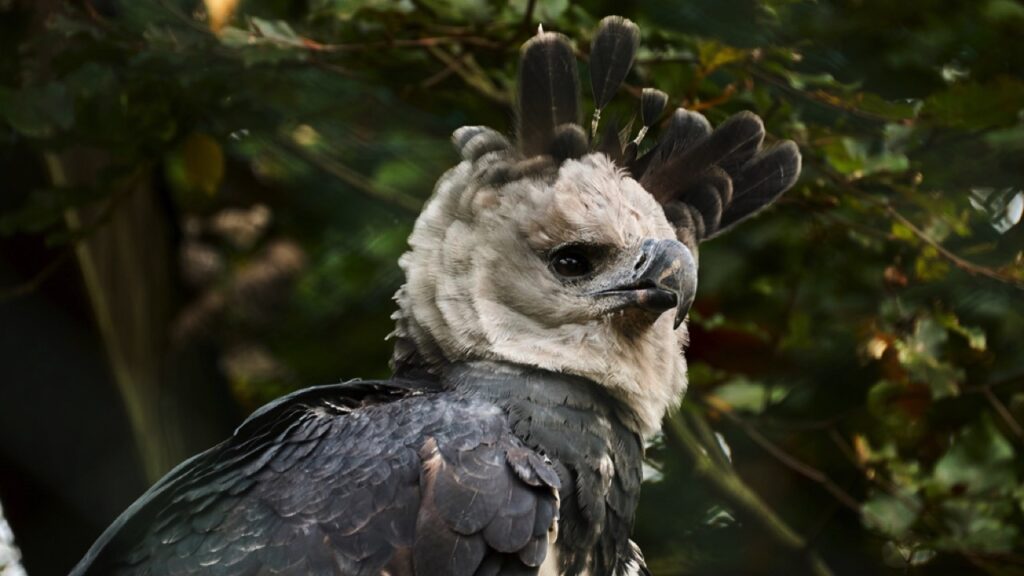
Harpy eagles, with their massive talons and powerful beaks, pose a significant threat to young anacondas. These birds of prey can spot snake hatchlings from high in the canopy and swoop down for a quick meal. While adult anacondas are too large for harpy eagles to tackle, the birds play a crucial role in controlling the snake population by preying on juveniles.
Giant Otters: The Aquatic Attackers
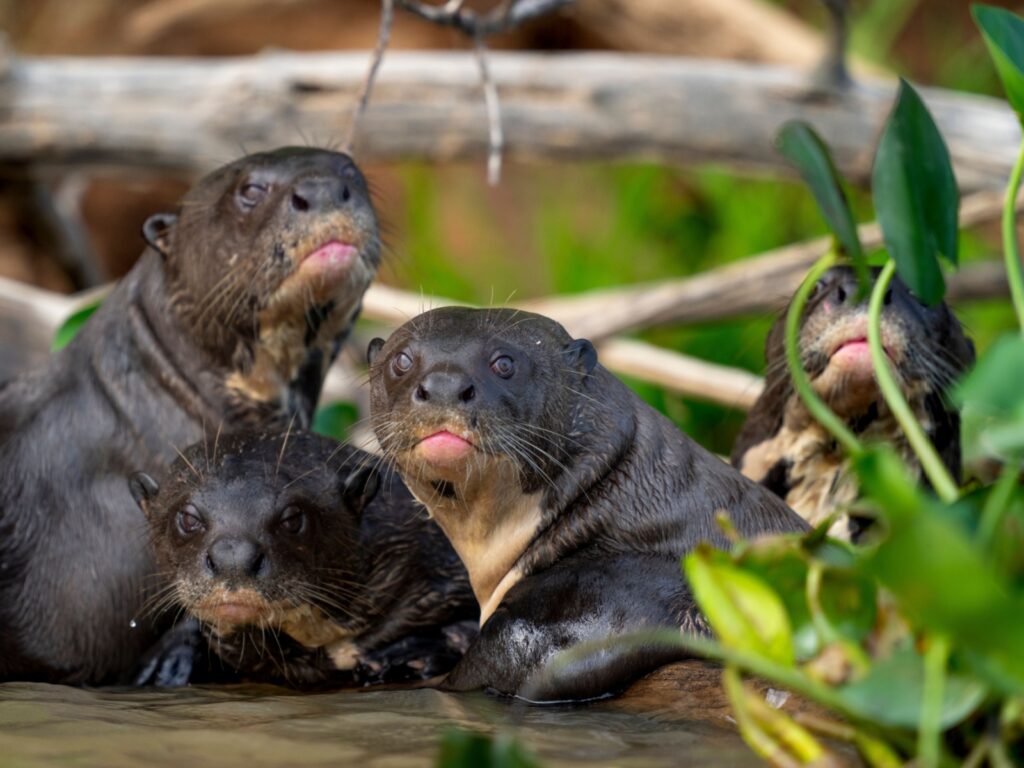
Giant otters, found in the same South American rivers as anacondas, are surprisingly fierce predators. These large, social mammals hunt in groups and can take on anacondas that venture into their territory. Their sharp teeth and strong jaws make them capable of injuring even large snakes. While they may not regularly hunt adult anacondas, they certainly pose a threat to younger or smaller individuals.
Humans: The Most Dangerous Predator

Humans pose the biggest threat to anaconda populations. People hunt anacondas for their skin, which is used to make leather products. Some kill the snakes out of fear or misconception about their danger to humans. Habitat destruction due to human activities also threatens anaconda populations. Unlike natural predators, human impact can have long-lasting effects on anaconda numbers and their ecosystem.
Pumas: The Mountain Lions of the Amazon
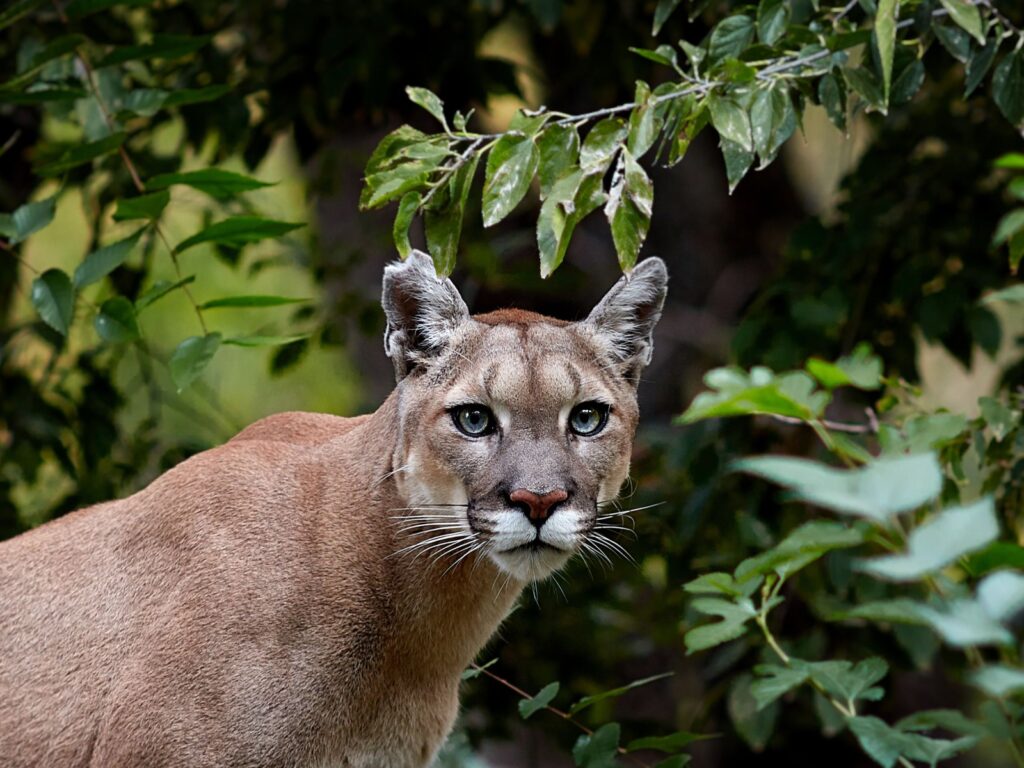
Pumas, also known as mountain lions or cougars, are skilled hunters that occasionally prey on anacondas. These big cats are agile and strong, capable of taking down prey much larger than themselves. While they prefer easier targets, pumas won’t hesitate to attack an anaconda if the opportunity arises. Their sharp claws and powerful bite make them a formidable opponent for the giant snakes.
Black Caimans: The Apex Predators
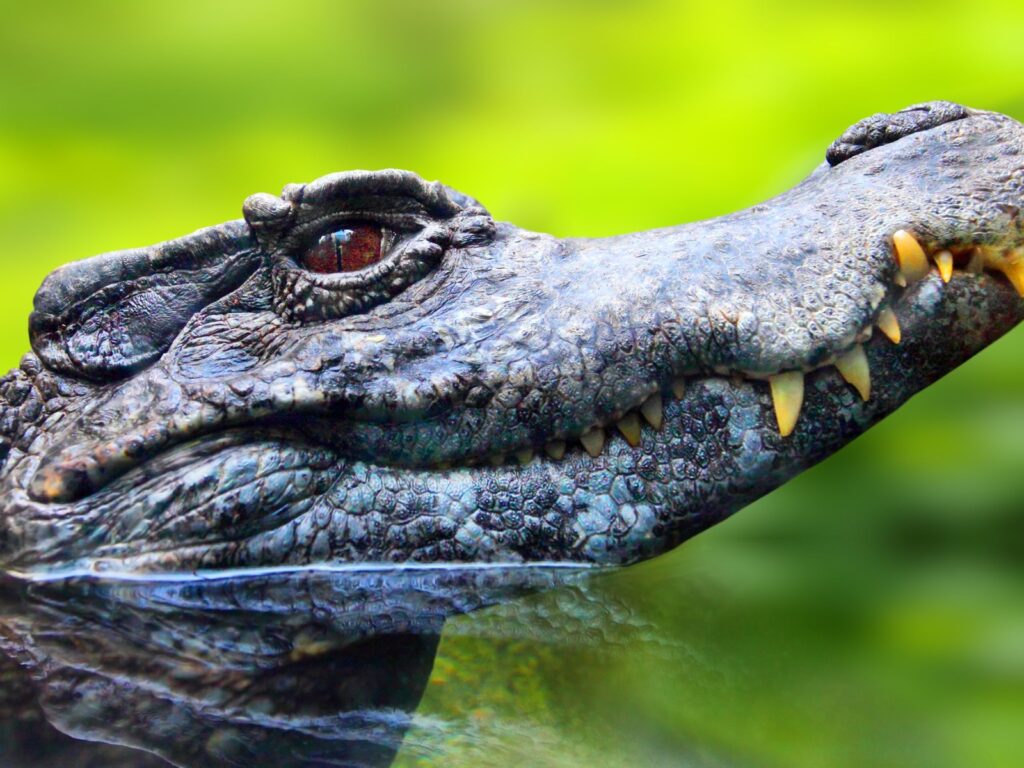
Black caimans, the largest predators in the Amazon ecosystem, are known to hunt anacondas. These massive reptiles can grow up to 16 feet long, making them capable of tackling even the largest anacondas. Black caimans have incredibly powerful jaws and often ambush their prey near the water’s edge. A battle between a black caiman and an anaconda is truly a sight to behold.
Anacondas Themselves: The Cannibalistic Threat
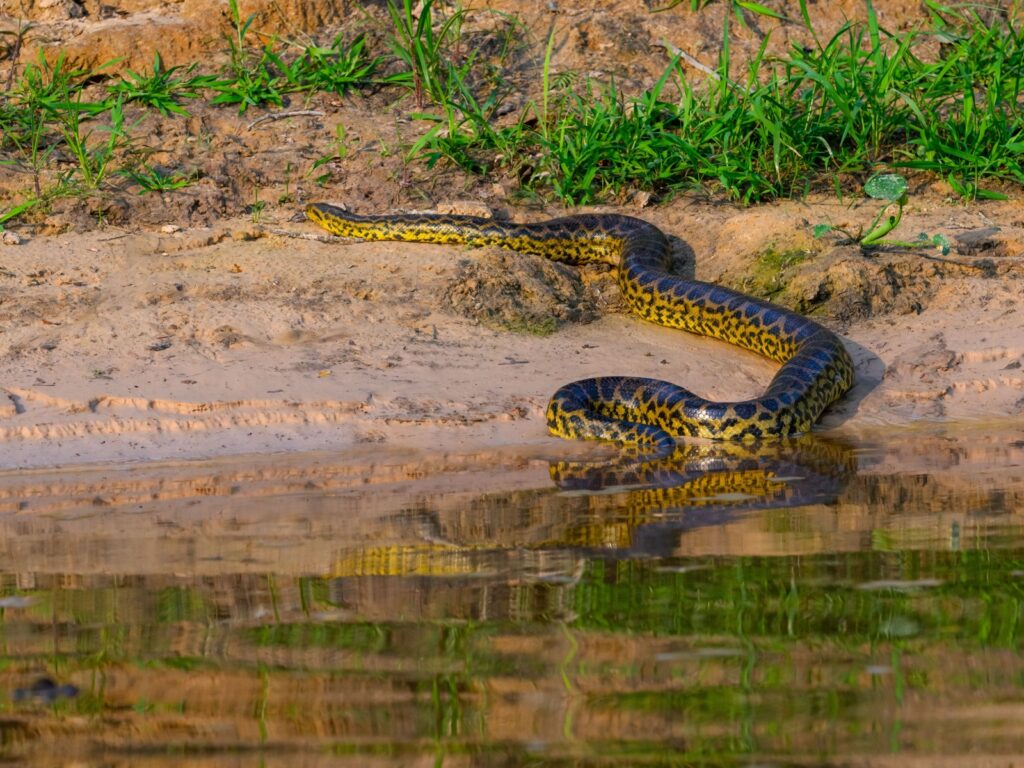
Surprisingly, anacondas can be a threat to their own kind. Larger anacondas sometimes prey on smaller ones, especially during times of food scarcity. This cannibalistic behavior is more common than many people realize. Female anacondas, which grow much larger than males, have been known to eat their mates after breeding, adding an extra layer of danger to the life of a male anaconda.
Large Wading Birds: The Unexpected Predators
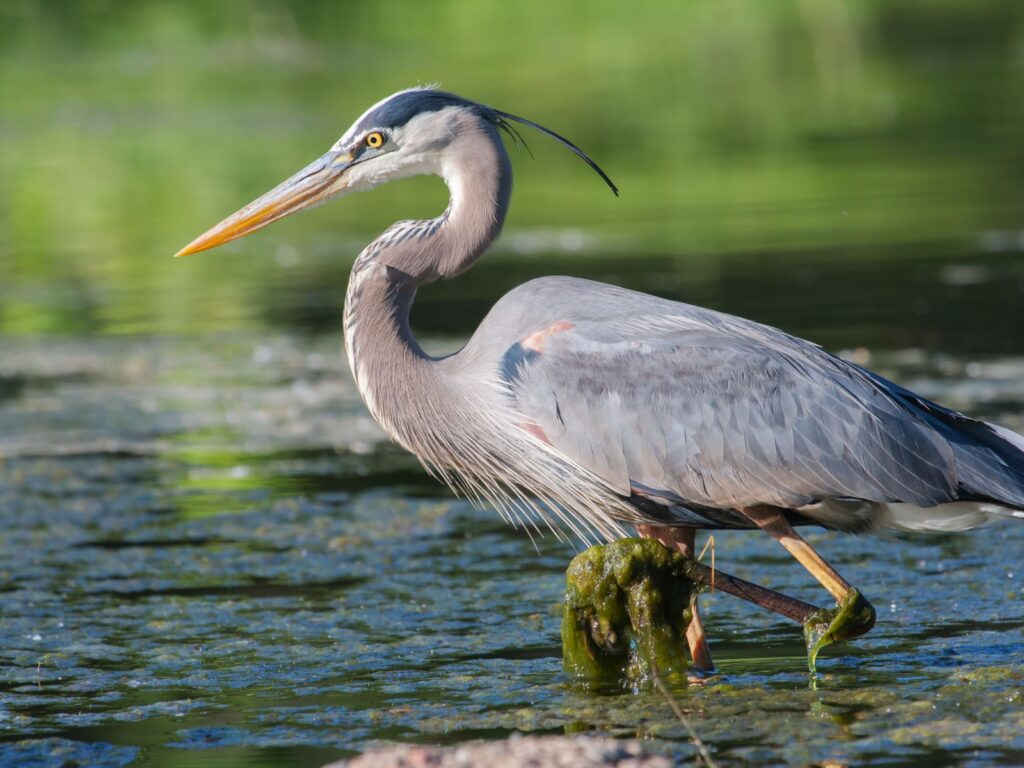
Large wading birds like herons and storks pose a threat to young anacondas. These birds have long, sharp beaks that they use to spear fish and small animals. Baby anacondas, vulnerable and small, make an easy target for these opportunistic hunters. While not a threat to adult snakes, these birds play a role in controlling anaconda populations by preying on the young.
Parasites: The Invisible Killers

While not predators in the traditional sense, parasites pose a significant threat to anacondas. Various types of worms, ticks, and other parasites can infest anacondas, weakening them and making them more vulnerable to other predators. In severe cases, parasite infestations can even lead to death. These tiny organisms serve as a reminder that even the mightiest creatures can be brought low by the smallest of foes.
Becky is a fervent wildlife enthusiast and pet care expert with a diploma in canine nutrition. Her love for animals stretches beyond the domestic, embracing the wild tapestry of global fauna. With over a decade of experience in animal welfare, Becky lends her expertise to OutlandishOwl through insightful articles, captivating wildlife information, and invaluable guidance on pet nutrition. Her work embodies a deep commitment to understanding the intricate lives of animals and a passion for educating others on sustaining natural habitats. Becky's hands-on conservation efforts and her knack for translating complex dietary science into practical pet feeding tips make her an indispensable voice for creatures great and small.

